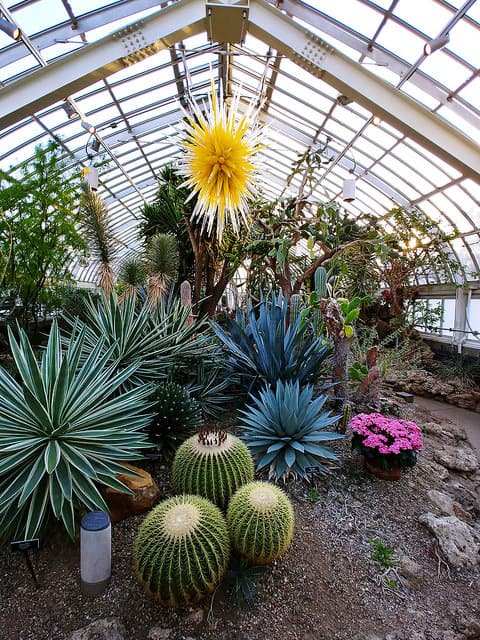After enjoying fresh vegetables, herbs, and fruit from your own garden during the summer months, you may be disappointed when winter comes around. Of course, you can buy organic produce from many local markets. However, there is something enriching about the process of growing your own produce.
The reality is that you do not have to completely abandon growing your own produce in the wintertime. You can cultivate an indoor winder garden. What follows are some tips, suggestions, and strategies to grow vegetables, herbs, and fruit indoors during the colder months of the year.
Herbs
Herbs represent the easiest edible plants to grow indoors during the winter months. With that in mind, basil is the simplest of the herbs to grow indoors — and, if you are like most people, basil is likely one of your favorite herbs. Growing basil can be done successfully by planning seeds in a pot placed next to a south facing window.
Other types of herbs oftentimes can be better grown indoors if you start them from cuttings, rather than seeds. These include rosemary, thyme, parsley, and oregano. These herbs can be planted in a pot place in a south facing window as well.
Root Vegetables
You may have grown different types of root vegetables outdoors. You can grow some of these successfully indoors during the winter months.
Radishes definitely can grow in an indoor setting because this vegetable doesn’t root as deeply as other root vegetables. Certain varieties of carrots can also be grown indoors as well.
The key to cultivating radishes and carrots indoors during the winter months is to select a box or trough of an appropriate depth (deeper for carrots). Seeds should be planted any time from mid-autumn to late winter.
Mushrooms
Mushrooms can be grown inside during wintertime. You may be unfamiliar with cultivating mushrooms. Indeed, you may think that there is just something too mysterious about growing mushrooms. In fact, you can cultivate mushrooms fairly easily.
You need to have a draft-free, dark place in your home. A cupboard of pantry can work. Ideally, the space should be such that you can maintain a temperature between 50 and 60 degrees.
You do not need to begin the process of growing mushrooms completely from scratch. You can purchase special compost that contains mushroom spawn. All you need to do to start the process of growing your own mushrooms is to water the soil and then leave it in your predesignated space.
Leafy Greens
If you want a bit more of a challenge, you can cultivate certain leafy greens indoors in wintertime. This includes lettuce, spinach, and arugula.
Leafy greens require more sunlight than the other vegetables previously discussed. IN reality, leafy greens are likely going to need more sunlight that can be gleaned even in a window with a southern exposure in wintertime. Therefore, you need to seriously consider investing in fluorescent grow lights to supplement natural light. You will want to leave the grow lights on between 10 to 12 hours each day.
Beyond the issue with ensuring leafy greens get enough light, the rest of the process of tending to these types of vegetables is not hard. You begin the process by planting seeds in moist potting soil. You need to water your leafy green crop regularly.

Tomatoes
You do not have to abandon home-grown tomatoes in the wintertime. As with leafy greens, tomatoes to require a bit more effort when grown indoors during the winter months.
You do need to select smaller varieties of tomatoes. With that said, you will still want to stake the plants to ensure that the weight of the fruit properly is supported. You will also want to use a larger pot or container to accommodate a tomato plant.
Edible Flowers
You may not have yet had occasion to experiment with edible flowers. You might want to take the plunge to growing and using edible flowers during the winter months.
Two edible flowers are particularly easy to grow indoors in wintertime. These are impatiens and calendulas.
These two types of edible flowers are delicious addition to salads. They are perfect salad toppers, adding color and an additional dash of flavor.
As with most of the other plants recommended for an indoor winter garden, edible flowers can be placed in a south facing window in your home. The amount of natural light received each day via a window on the south side of your house should be enough to sustain the growth of edible flowers.
Jessica Kane is a writer for Grow Ace, your best online option for getting your new hydroponic grow operation up and running quickly and easily.



Comments are closed.